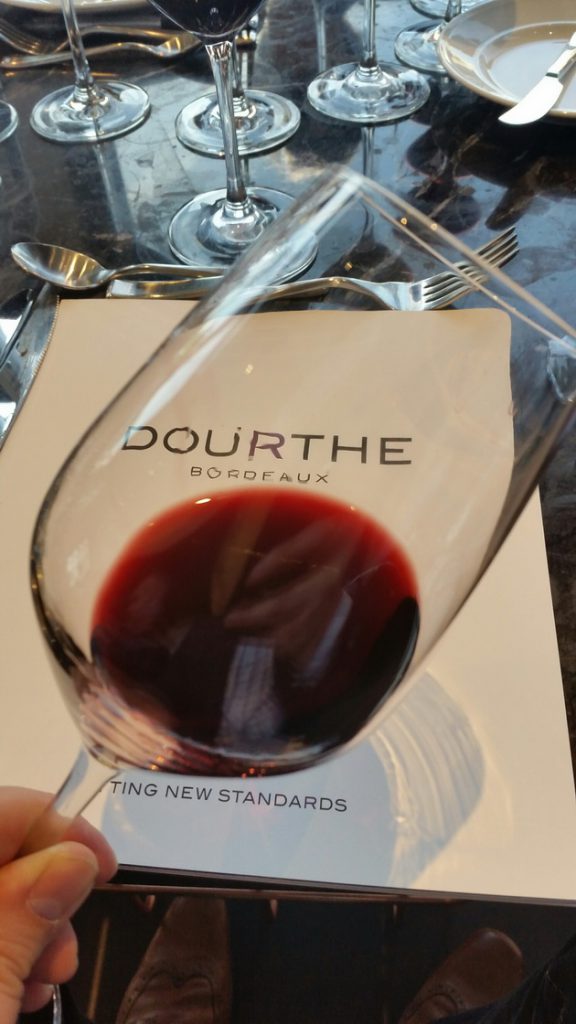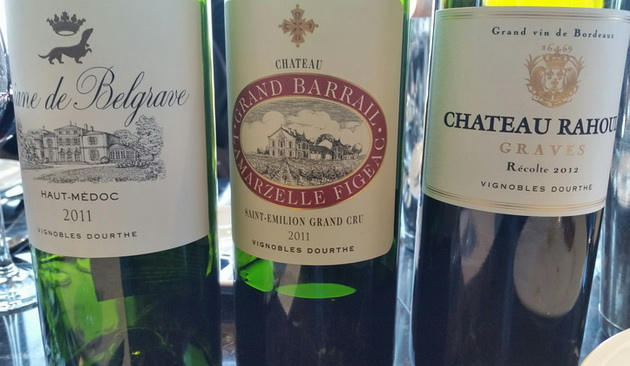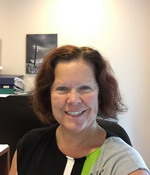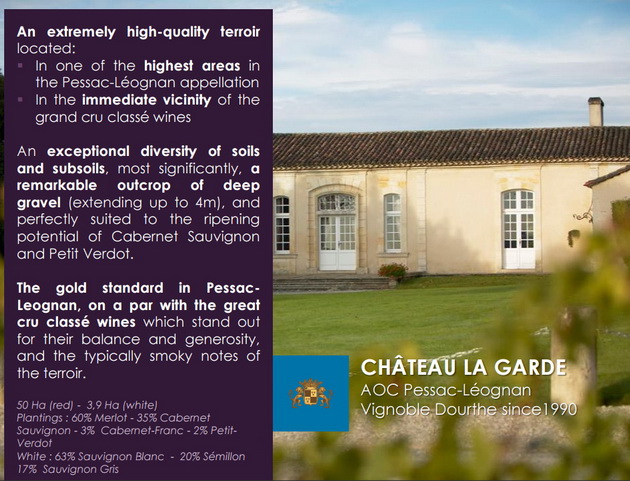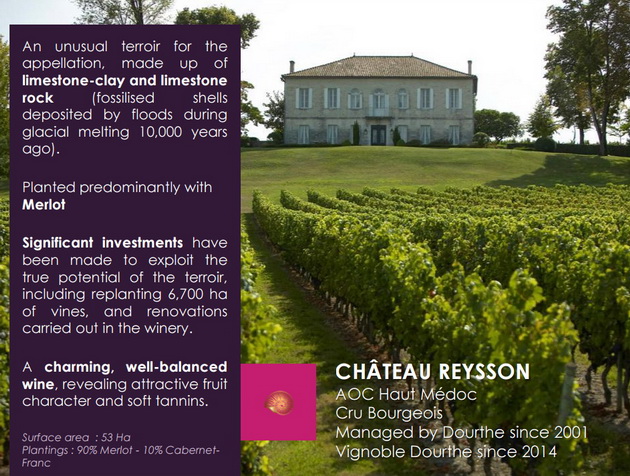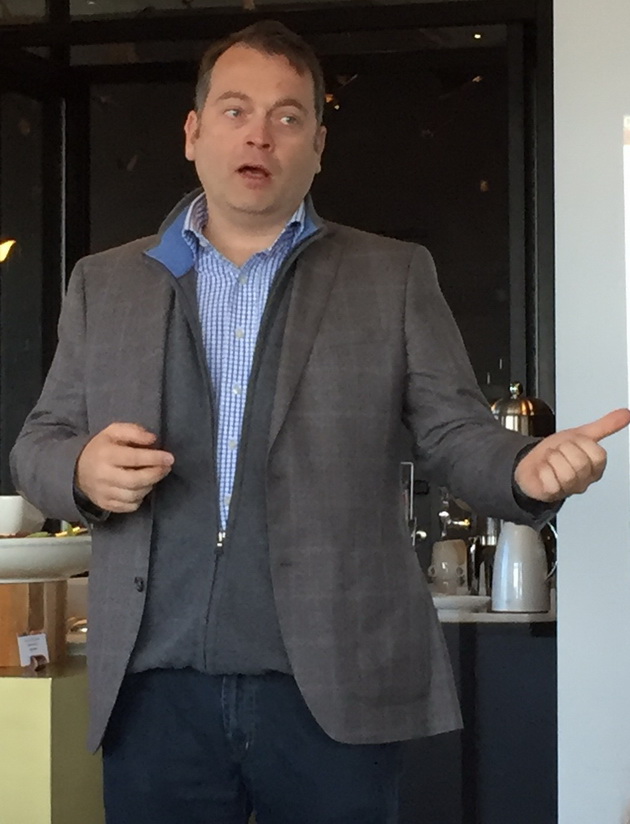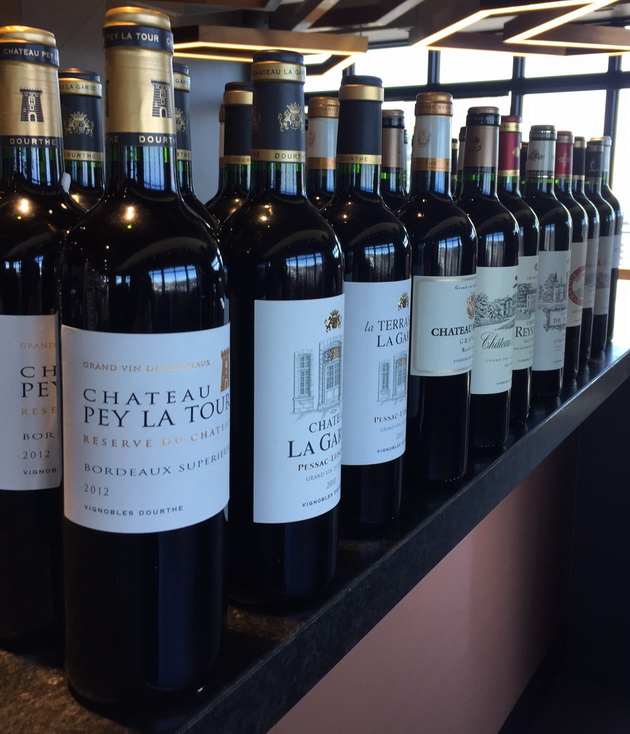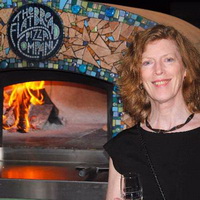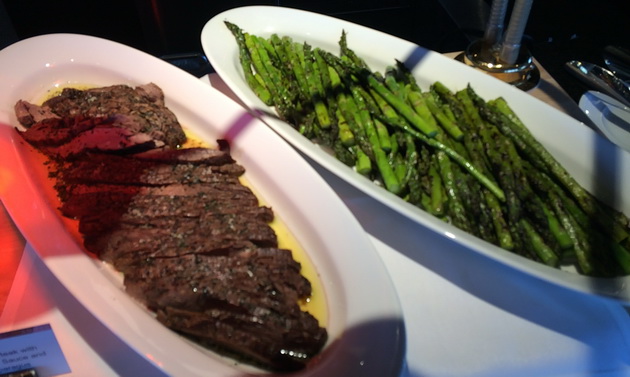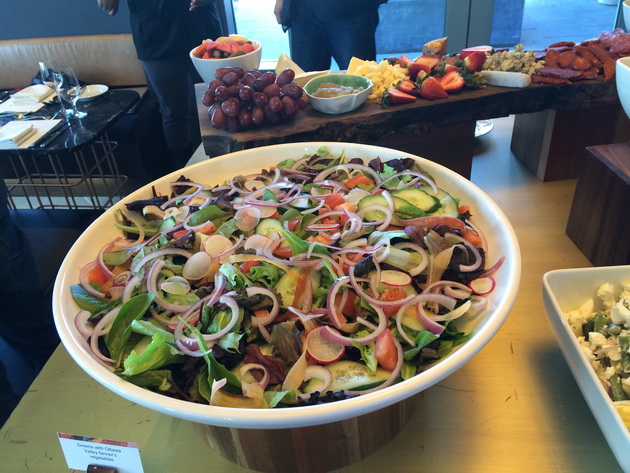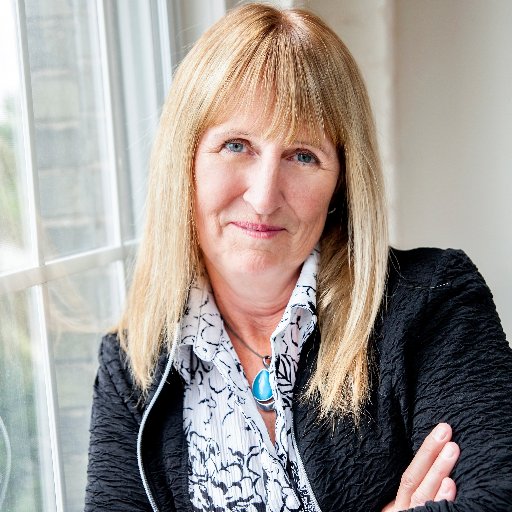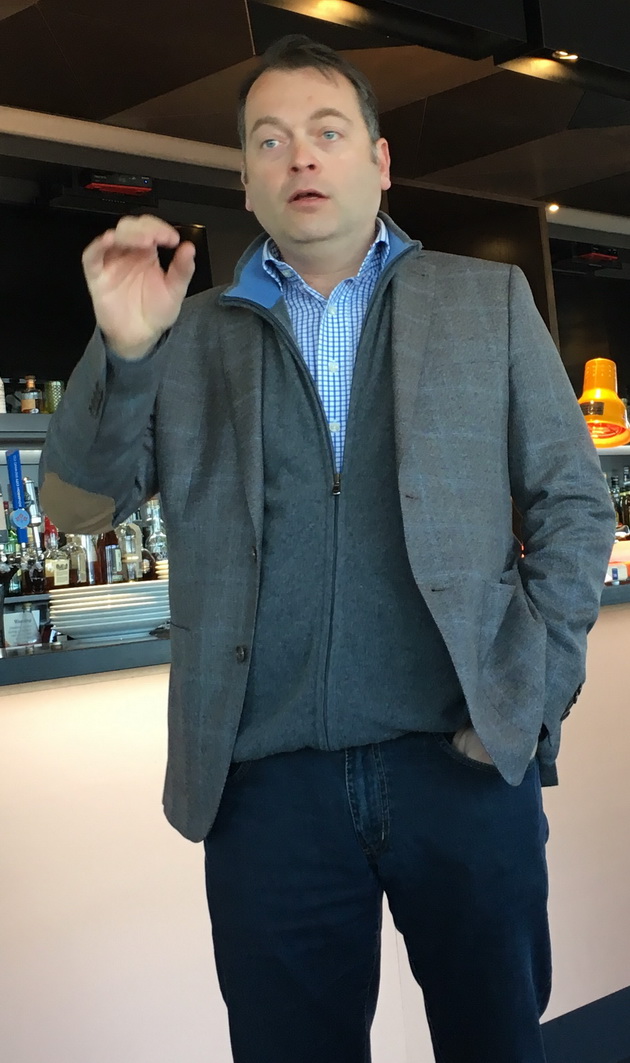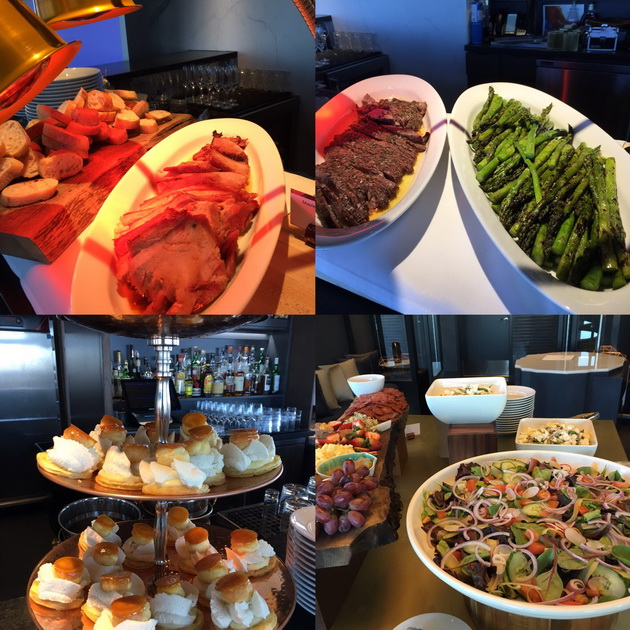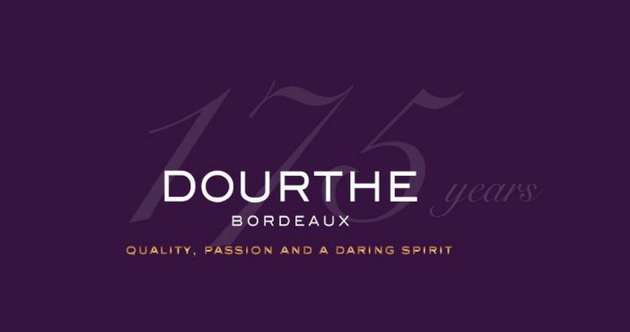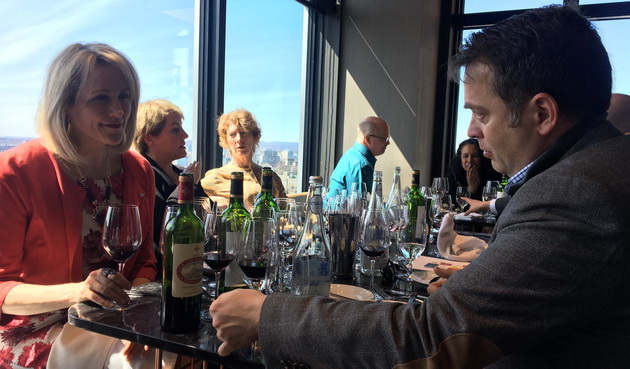Recently, Canada’s top wine writers and sommeliers gathered in the nation’s capital for a Dourthe portfolio tasting with Head Winemaker, Frédéric Bonnaffous.
Established in 1840, Dourthe is recognized as a leader in the Bordeaux of France, with a particular passion for the various soil types and the wines best suited to them.
The nine estates that comprise Dourthe all focus on the unique character of their respective appellations. Here are the team’s notes and impressions.
Jennifer MacDonald Havers
Wine Columnist, Ottawa Citizen
What an honour to meet head winemaker, Frédéric Bonnaffous, and to learn about the various châteaux of Dourthe in Bordeaux. We were given a wonderful overview of the Dourthe portfolio, as well as a nice lesson on their different Bordeaux domains and the diversity of wine styles found across the region.
As we worked through their offering of wines, we are given an overview of the properties of each vineyard. One such Château Ricaud, was built in the 15th century and is situated in a natural amphitheatre of clay and limestone-sloped land. Here, primarily Merlot is planted, along with Cabernet Sauvignon and Petit Verdot. Resulting wines are aromatic and full of body and flavour.

Across all sites and châteaux, we also learned of the history of the region. Dourthe’s experience shows through in the knowledge of the individual vineyard sites, each tailored specifically to certain grapes to magnify their potential and produce the best possible wine for that micro-climate and terroir. Frédéric spoke about this site-specific planting when we talked about Château La Garde in Pessac-Léognan.
We tried three different wines from this site to demonstrate the diversity found in such a small area. Within the 60-hectare property, all the various soils of Bordeaux can be found, including sand, clay, limestone, and gravel mixed with clay, all suiting a specific grape and bringing a certain characteristic to the wine.
In some châteaux, plantings have changed through the years in order to emphasize certain flavours, or to take advantage of site specific soil. For instance, in Château La Boscq, mainly red grapes are planted on this small property with gravel and clay soils. The resulting wine, classified in 2012 as Cru Bourgeois, blends Merlot, Cabernet Sauvignon, Petit Verdot and Cabernet Franc.
Finally, we had the privilege to try Essence de Dourthe – the “carte blanche” wine – where no expense is spared. The Dourthe team approached the making of this wine in the spirit of a Super Tuscan; this “Super Bordeaux” wine epitomizes the qualities of the terroir of the entire region. All vineyard sites are considered, and the winemaking team identifies the best of the best wines from all areas for consideration to be included in the blend.
After extensive tasting, the best blend is created. It’s not made each year, and some exceptional wines are not used as they may not fit the blend itself, but the resulting wine created is the top tier of what all the châteaux of Dourthe have to offer – hence, the “Essence” of Dourthe.
It was such a joy to try this wine, and to hear the story of how it is created.
Dourthe La Terrasse De La Garde 2007
Bordeaux, France
Andrew Bernardo
Editor, Ottawa Wine Journal
This scenic tasting at the top of the Andaz Hotel in the Copper Lounge was expertly led and supported, and the food was, as always, exceptionally paired.
There were truly no open frames left bowled in this incredible tasting from Dourthe, just terrific strikes. These gems showed an incredible dedication to appellation and varietal authenticity. Although I am well aware of the wines of this French powerhouse, I was truly amazed by the extent of their holdings in virtually every appellation in Bordeaux.
Whether it was Right Bank, Left Bank, or “all over”, as represented by the famed “Essence de Dourthe”, Frédéric Bonnaffous, has seemed to have honed in on every parcel, every vine and where it is rooted, to determine how he is going to best represent the terroir in every step of the winemaking process.
Perhaps more importantly, Frédéric has laid his ears to his vines, and how they respond to the climactic conditions that positively contributed to or challenged each respective vintage. For many Bordeaux collectors like myself, some of these wines allowed us to peer into the vintage far before we are ready to open up our own bottles, yet others encourage us to seek out non-hyped vintages to sources of terrific value.
The three standout wines were the Château La Garde 2010, Pessac-Léognan, the Château Belgrave 2010, Haut-Médoc, and the Château Rahoul Alain Thiénot 2012 from Graves. All showed immense power packed on to taut, muscular frames, yet all had their own distinct varietal character depending on the blends and the sites.
They are “Bordeaux-drinkers” wines that make you realize that despite increasingly steep prices, especially in the First and Second Growths, it is still worth it to pack a few in your cellar and wait for the rewards.
Of particular note, not one of these wines showed an over-use of wood, even at the more value-driven price points or in leaner years. Bonnafou hinted at this more than once during the tasting, but it is worth reinforcing the point that a winemaker runs a significant risk of masking a wine’s terroir by exposing it to too much oak.
The result is an incredible focus on the freshness and acidity of the fruit, supported by secondary and tertiary characteristics, rather than oak-driven wines putting vanilla and charred characteristics front and center.
Overall this tasting was memorable, with Bonnafou’s passion coming through in his descriptions of each wine. Many of the tasters were checking the availability of many of the wines at the LCBO and SAQ while tasting – always a good sign if you ask me.
A true oenophile can never quite get away from Bordeaux, and Dourthe has shown why.
Château La Garde 2010
Pessac-Léognan, Bordeaux A.C., France
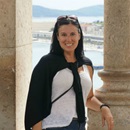
Cora Beaulieu
Wine & Travel Writer
The buzz had been circulating and I, as a wine writer, was elated to have been given the invite to this excellent Bordeaux tasting put on by host Frédéric Bonnafous, Director of Dourthe Estates.
By a happy coincidence, I had been to Bordeaux wine country the summer of 2016. This part of the country combines a pleasant climate and gently rolling countryside, ideal for summer vacationers and a leading destination for wine lovers.
Its unique location has influences of the Atlantic maritime climate, a terroir consisting of rocky mounds of gravel, mineral rich soils and gravel with a subsoil of clay which help to impart the unique taste, character, and style found in most Bordeaux wines.
As such, Bordeaux wines are unique and have one of the most copied blends around the world; typically a combination of Cabernet Sauvignon, Merlot, Cabernet Franc, Petit Verdot and Malbec (with a tiny amount of Carménère).
When you think of balanced Bordeaux, the wines should walk that superb fine line between the elements of acid, fruit, sweetness and tannins. Dourthe Estates has cracked that proverbial mark by creating beautiful and austere wines.
Viewing all their bottles lined up, it was impossible not to be impressed. Once poured, a good selection of the wines are inky, dark, generally opaque, with rims the color of purple. The lighter wines are mostly dark, deep ruby coloured.
Across the board, the wines are aromatic, fresh, and clean. Medium to full-bodied wines with aromas that are pure, fruit-driven (plums and blackcurrant), cassis, blackberry, dark cherry, vanilla, black cherry, spice, graphite, but also floral, and most have an earthiness like smelling green pepper, cedar, damp soil or lead from a pencil.
But the real action takes place on the palate. The tannins and acidity are pleasantly high, but it’s the sweet, ripe, fruits and their freshness that stays with you. Their wines show lots of structure and backbone, with layers upon layers of complexity. Mouth-feel is often soft, silky, and elegant and can feel like velvet on your palate.
Château De Ricaud 2012
Cadillac Côtes De Bordeaux A.C., France
David Skinner
Wine & Travel Columnist, Outdoor Magazine
Every fine bottle of wine begins in the vineyard and Dourthe Estate’s viticultural emphasis is evident in the portfolio presented to some of Ottawa’s top writers by head winemaker, Frédéric Bonnaffous.
This commitment to the cultivation and harvesting of only the best fruit is emphasized by the company’s President, Patrick Jestin “We are grape growers first and foremost; we adhere to an uncompromising quality policy for all our wines”. This approach to managing the nine distinct estates in Bordeaux has kept the Dourthe name atop the industry leaderboard for some time.
With more than 500 hectares under vine, Monsieur Bonnafous has a wealth of opportunity to make distinctive styles from the terroir offerings from both the left and right banks of the Gironde and its tributaries. The soils nurturing the plantings have been a fundamental aspect of quality management and Dourthe has been meticulous in their research into what the land offers to the winemaker.
Each vineyard has been mapped in detail to ensure that decisions are made for customizing rootstock selection and viticultural practices down to the micro-parcel of land. This knowledge has underpinned the sustainable agricultural methods appropriate to each soil type from clay to gravel and limestone.
Individual substrates support the four major varietals planted, but each in a different way. Clay allows for a strong expression of fruit; limestone imparts a distinctive minerality and the stoney topsoil of Graves forces deep root structure that yields its own distinctiveness to the grapes.
Armed with a deep understanding of the land, varietals and cultivars have been married to the terroir with specific wine styles in mind. The intention is to drive a consistency within each estate and derive the best that this union can offer.
Frédéric is quick to point out that while Merlot, Cabernet Sauvignon and Cabernet Franc are grown in varying ratios in almost every parcel, he has a fondness for planting Petit Verdot every chance he gets. While the diminutive grape is planted sparingly, it packs a punch that can give some extra heft to delicate Merlots and classic Bordeaux blends.
“Petit Verdot is like salt and pepper,” he points out. It is very powerful and overwhelming on its own but, as an accent, it can bring out the best in its bottle mates.
All the wines see very little new oak aging. Winemaking at Dourthe is all about allowing the expression of soil, grape and vintage. Frédéric feels that too much oak character detracts from what nature has provided and this is particularly so with Merlot’s subtleties.
Used oak barrels allow the wine to mature in the proper environment that will permit the expressions of the fruit-based tannins and flavors. Every wine tasted had similar silky tannins and solid acidity derived from this practice.
This emphasis on native expression and gentle barrel aging is most evident in their flagship wine “Essence de Dourthe”.
The wine does indeed capture what the essence of Dourthe quality is all about. Frédéric calls this blend a “super Bordeaux”, borrowing from its super-Tuscan namesake from neighboring Italy.
Super indeed.
Starting from the top estates, each domain is given the opportunity to select the best grapes from the best soil and make a limited offering of what they feel is the echelon of their efforts. Cumulatively, only eight hectares give birth to what eventually is selected as a blend of the best of the best.
Such limitations result in only 6,000 bottles, but it isn’t every year that the wine is made. It also must be a good vintage (the 2010 vintage is currently in short supply and the 2014 version is due out next). Once the team of winemakers select the ideal proportions, the finished nectar is sent to age for 20 months in (you guessed it) second-use barrels.
In describing the selection process, Frédéric noted that even some of the top wines don’t make it past the finish line. He put it this way “You are the best but without you we are better”.
Not only does this describe a dedication to quality but it emphasizes that the team is more important than the individual and that’s a part of the Dourthe Estates culture and heritage.
Château Pey La Tour Réserve Du Château 2012
Bordeaux, France

Doug McMillan
Accredited Sommelier
When one attends a private wine tasting, there are certain aspects that are common to all, but always something different as well. The tasting hosted by Dourthe Wines of Bordeaux was a fantastic affair on a beautiful, sunny, spring day in Ottawa, with a dazzling vista of Ottawa available from the top of the Andaz hotel. Everyone was in a great mood for tasting wines.
The wines themselves (one white and about a dozen reds) were all quite spectacular, and covered a fairly wide range of styles. Things are changing slowly, but I think the tendency of Old World winemakers to focus on terroir and New World winemakers to focus on the grapes and growing techniques, still holds true, although each takes the best of other parts of the winemaking “spectrum”.
The Dourthe wines are quite traditional in style, and are great examples of such, but they also use the latest in production techniques. They study the land to ensure the best types of grapes are grown in each parcel, but in many cases this was done long ago through trial and error; one of the perks of making wine in the same place for hundreds of years.
As is the tradition in French winemaking, the wines are more about blends than the more new-world varietal based products. This gives them a lot more flexibility in creating exactly the flavour profile they’re after, as well as optimizing for the ups and downs in different growing seasons.
The flexibility is tempered somewhat by some of the strict rules that govern wine production in France, but it’s enough. I find that although it makes it harder for a non-sommelier to know what sort of wine they’re buying, it also gives a wider range of tastes.
As an example, Merlot is one of the major Bordeaux grapes and is present in all the reds. Most of the single-varietal Merlot wines you find are big, round, full-bodied, but frequently lack “punch”. That could not really be said about most Bordeaux wines.
They blend Cabernet Franc, Cabernet Sauvignon, and Petit Verdot in various percentages to highlight and support the best aspects of each, and I find the wines tend to be more food-friendly, or at least, friendly for a much wider range of foods than a single varietal Merlot.
(Not that many New World winemakers also do blends, but it’s rarely advertised as such, and there are limits on the percentages.)
The white wine presented was a treat. Mostly Sauvignon Blanc, it was clean, fresh, and fragrant. It had a wider flavour than New Zealand style Sauvignon Blanc, partially due to the blending of Semillon and Sauvignon Gris, but also because, surprisingly (to me at least), it was actually partially done in oak. Seven percent in new French oak barrels.
When oak is over-done in white wines, I find it really robs them of their freshness, but this use of oak was just right, giving character without hiding the aspects of the Sauvignon Blanc that make it attractive.
In general, this tasting for me was a reminder that I should get over my fear of not knowing the exact varietals or blends used in French wines and buy more, appreciating them for the complexity they bring.
Château Belgrave 2010
Haut-Médoc, Bordeaux A.C., France
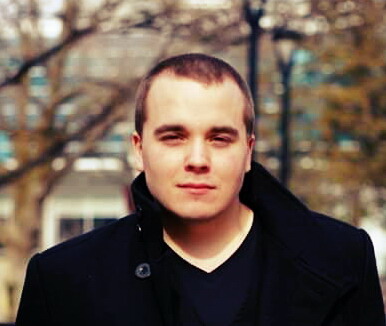
Greg Hughes
Wine Writer & Sommelier
What a pleasure it is to sit in on a tasting, such as the one Vignobles Dourthe put forth at the Andaz, Ottawa. Rarely do you get to see one producer present such an array of different and contrasting terroirs.
They are a firm that have been heavily invested in Bordeaux since the mid-nineteenth century.
Generally speaking, there are three great climactic divides along the Bordeaux Estuary, which is the dominant geographical feature of the area.
There is the Left Bank, where some of the world’s most breathtaking (and costly) Cabernet Sauvignon dominant blends reside.
The Right Bank, where cooler soils give rise to cult wines built around Merlot and Cabernet Franc.
Further up the estuary, a confluence of the Dordogne, Garonne, and other river tributaries feed into the Gironde, as it empties into the Atlantic. This area produces red, white, and also, fine dessert wines.
Dourthe incorporates many selections of all three of these areas into their offering.
Slowly and gradually, a diverse range of estates have joined the Dourthe family and they maintain unique integrity of these historic estates. Some of their more famous holdings include Chateau Raoul, Pey La Tour, Chateau La Garde, and Chateau Belgrave (a fifth growth classified in 1855 along with famous estates like Lafite and Cos Destournel).
They see themselves as custodians, preserving the historicity and uniqueness of the wines these estates produce. Not only do they honour their estates, but it’s also interesting to note they feel the same way about what they grow.
They are ardent supporters of growing large proportions of Cabernet Franc and Petit Verdot, in their respective areas, to maintain their classical contributions to the iconic Bordeaux styles.
Cabernet Franc delivers beautiful floral and herbal aromatic, when slipped into the blend in significant proportions, as has been achieved with Chateau La Grand Barrail Lamarzelle Figeac, in St. Emilion.
Similarly, they grow a lot of Petit Verdot in their Haut Medoc and Entre Deux Mers estates, including Belgrave and Pey La Tour. The payoff for Petit Verdot is its bombastic, full-bodied nature. The key is using it like a garnish on food – like salt or pepper. Too much makes a wine too tannic or imbalanced. Just enough can give the fruit a deep, dark, ruminating dimension.
Another obscure varietal it was nice to see being put forward as an integral component to Dourthe’s wine was Sauvignon Gris (a greyish pink skinned mutation of Sauvignon Blanc prized for juicy tropicality). It is by far one of the rarest traditional Bordeaux varietals, but it composes 15% of Chateau La Garde’s estate white.
Château Rahoul Alain Thiénot, Prop. Meritage 2012
A.C., Graves, Bordeaux, France
Château La Garde 2014
Pessac-Léognan, Bordeaux A.C., France
Gwen Barton
Accredited Sommelier
A fabulous tasting took place this week in the penthouse cocktail lounge at Andaz hotel. Our tasting team had the honour of hearing from Frédéric Bonnaffous, Head Winemaker for Dourthe Bordeaux, as he walked us through a wonderful array of their signature wines.
What I found most interesting about the presentation was the emphasis on the terroir. While I know that soil in Bordeaux is perfect for grape vines (and little else) it was listening to Frédéric that made it clear how much of an influencing factor it truly is.
Each wine he described, he noted where each grape varietal was grown and the type of soil/clay, gravel, silty or limestone, and how the soil significantly contributes to the personality of the wine.
More research done after the tasting discovered the extent to which the science of soil mapping is a critical factor to planning and decision making for the winemaking team.
I was also impressed with the range of wines shared with us during the tasting. Dourthe produces wine in six chateaux with grapes grown on over 500 hectares of vines. Each chateau produces delightful blends of Cabernet Sauvignon, Cabernet Franc, Merlot and Petit Verdot, barrel aged, which adds to the complexity and depth of flavour profiles.
Bonnefous spoke in detail about the impact of Petit Verdot on the final product. He spoke to this grape adding the “power” to the wine (tannins, colour and flavour).
Challenging to produce as a single varietal, however, used in small quantities, it is integral to the blend adding a unique flavour including hints of violet which is often noted in Bordeaux tastings.
At the end of our event, we had the pleasure of tasting Dourthe’s “Essence” which takes the “best of the best” grapes from different regions and allows the winemaker free reign to create a remarkable Bordeaux with wonderful complexity and, while definitely drinkable now, it has definite aging potential. What a treat.
Thank you Natalie MacLean for organizing; Andaz for being such a wonderful host; and Monsieur Bonnaffous for an incredibly educational tasting.
Château Pey La Tour Réserve Du Château 2014
Bordeaux, France

Matt Steeves
Wine Expert, CTV Morning Live
It’s not every day that a Bordeaux winemaker leaves his beautiful Chateau in Bordeaux, France, to travel to Canada’s capital, Ottawa, to pour a dozen of his premium wines to a small group of sommeliers and wine writers.
Fortunately, I had the distinct pleasure of attending this rare Bordeaux tasting, and of course, tasting the full line-up of Maison Dourthe’s wines, most of which, for the first time.
Wow, what a fantastic portfolio that impressed all the tasters and also showed the exceptional high level of quality that Dourthe’s 9 Chateaus are producing.
Maison Dourthe owns 9 wineries (chateaux) throughout Bordeaux, including Chateau Belgrave, a classified Grand Cru winery from the 1855 Classification of Bordeaux’s best wines, that Emperor Napoleon III ordered to showcase their finest wines to visitors from around the world (how thoughtful, Napoleon!).
With several of their chateaux on the left bank, where the finest Cabernet Sauvignon is produced in the region’s gravely soils, to their right bank St-Emilion Grand Cru Chateaux (Chateau Grand Barrail and Chateau Haut Gros Caillou), where exceptional Merlot is grown in the clay soils, and of course, their entre-deux-mers winery, Chateau Pey la Tour, which happens to be one of the most popular Bordeaux Superieur wines around the world, given its great structure and affordable super value price.
Many of the wines stood out to me as truly exceptional. Six of the wines I scored 92+ points, with a few 93s and one 96-98 points, being awarded to Essence, Dourthe’s Super-Bordeaux (like Italy’s Super Tuscan, but from Bordeaux), which was simply sublime and showcased just how terrific a Bordeaux blend can be when nothing but the best of the best are used.
Chateau La Garde, Chateau Le Boscq, Chateau Grand Barrail Lamarzelle Figeac and Chateau Belgrave were all outstanding!
Keep your eyes peeled for those wines when released through either SAQ in Quebec or LCBO in Ontario.
Above all, this was a great reminder of why we should all be drinking more Bordeaux, or at least buying some and cellaring it to enjoy down the road for those special occasions.
Château Grand Barrail Lamarzelle Figeac 2011
Saint-Émilion, Bordeaux A.C., France

Simon Chen, Ph.D.
Department of Cellular and Molecular Medicine
Faculty of Medicine, University of Ottawa and Wine Writer
It was my first time attending Natalie’s team wine tasting at the Andaz Hotel, and it was simply amazing.
We tasted 12 wines from different regions in Bordeaux, all made by the same winemaker, and really got to learn about how terroir makes a difference to the wine. We had wines from Haut-Medoc, Cadilac Cote De Bordeaux, Graves, Pessac-Leognan, St Estephe, and Saint-Emillion. We also had first and second label wines from the same chateau to compare how they are different from each other.
Many wines that we had are Merlot blend, including Château Pey La Tour Réserve Du Château, Château Rahoul, Château La Garde, Château Grand Barrail Lamarzelle Figeac 2011, and Chateau Reysson. However, you can clearly taste that the Merlot in each wine is different from one another, depending on the region.
For example, the Merlot from Chateau Grand Barrail Lamarzelle Figeac has more fruit, more rounded structure compared to other Left Bank chateaux. In contrast, Merlot from Chateau Le Garde gives gravel, mineral, and firm tannin.
It is definitely an interesting experience to compare so many wines from different regions that are made by the same winemaker.
At the end, what impressed me most was that the winemaker goes out of tradition and makes this ‘super bordeaux’ wine. We know that in Napa, many wineries blend grapes from different vineyards in Napa.
However, in Bordeaux, there are strict rules that wineries need to follow the AOC regulation. It was surprising to learn that in Dourthe’s top premium wine – Essence De Dourthe, the winemaker chooses the best grapes from different wine regions to blend (which could be Cabernet from St. Julien, Merlot from St. Emillion, and Petit Verdot from Haut-Medoc), and makes the best wine that they can offer.
This wine is rich, complex, with big structure and smooth yet long finish.
I drink Bordeaux wines often and I have been to many Union des Grand Crus de Bordeaux (UGC) events to see, to taste 100+ Bordeaux wines in each vintage. However, it was rare that I have the opportunity to taste wines from different regions that are made by the same winemaker.
I asked him after the tasting, how he showcases the characteristics of each vintage, and he said, “It all depends on when you decide to harvest. A good winemaker will know when to pick the grapes to highlight the characteristics of the vintage, terroir, and region.”
I believe that he achieved just that.
Even in the challenging vintages of 2012 and 2013, his wines from Château De Ricaud, Château Rahoul, and La Terrasse De La Garde all demonstrate very good fruit and round structure that are very approachable.
Diane de Belgrave 2010
Haut-Médoc, Bordeaux, France

Lynn van der Linde
Accredited Sommelier and Event Planner
Perched atop of downtown Ottawa, with a view of the Parliament and Gatineau, the Andaz Hotel was the perfect location for a whirlwind tour of Bordeaux wines, through the eyes of Dourthe Winery Estates Director and Winemaker, Frédéric Bonnaffous.
Established over 175 years ago, the Dourthe Winery was created by Pierre Dourthe, and since then, generations of the Dourthe family have cut new paths in winemaking, and along the way building and acquiring the now ten chateaux estates that span from the north of Bordeaux in Medoc, to east in Pomerol, and to the south in Sauternes.
We started the afternoon’s tasting with the only white wine of the day, Chateau La Garde, with grapes grown in the Pessac-Léognan region. This appellation is known for some of the finest gravel soils, which produce delicate yet sophisticated wine.
Three quarters of this white wine is derived from Sauvignon Blanc grapes, and the balance from Sauvignon Gris and Sémillon, making for a very fresh palate with crisp acidity. An impeccable way to kick off the day.
The remainder of our oenology field trip was spent tasting red wines from a sampling of the Douthe Estates. Making our way to the centre of Bordeaux in the Bordeaux Supérieur region, our first red wine was from the Château Pey La Tour, 2015, with heady sweet and spicy aromas (read: cigar box), with a long peppery finish.
I kept going back to this first glass throughout the afternoon, as it continued to soften, open up, and present more of those sweet spice characteristics. The soft texture and sweet aromas make this a perfect “beginner’s Bordeaux” for those who are more accustomed to New World wine and want to dip their toe in Bordeaux country.
Another entry Bordeaux would be the red from Château La Garde – where Frédéric purposefully crafts this blend to have a more new world feel by using older oak barrels and allowing the fruit to come forward on the palate. In Frédéric’s view, the Pessac-Léognan region produces the best Cabernet Sauvignon from the Right Bank, and the best Merlot from the Left Bank of the Gironde river in Bordeaux.
As I continued to collect tasting glasses in front of me, there were a few pours that stood out from the others. The Château Rahoul 2012 is a wonderfully sexy wine, presenting black plums, vanilla and oak, and a balanced mouth feel from first to last sip. It’s a very impressive wine to pour for friends and family, and at thirty dollars it won’t break the bank!
The Château Reysson Cru Bourgeouis from the northern Bordeaux region of Haut-Médoc was another crowd pleaser and certainly worthy of a shout out. Different from the usual gravel terroir of Bordeaux, the unique clay soil of Château Reysson produces a very sultry and luxurious wine.
Dark purple in the glass, with prevailing cassis and black pepper aromas, and a soft mouth feel, I was saddened to hear that it’s only available in Alberta right now.
I was also reminded of the interesting tidbit of knowledge that the Cru Bourgeouis is sort of the next level of “perfection” only after the Grand Cru status. Each year, there is a grading in the standard of quality of Bordeaux wines, and only the finest and second finest are called Grand Cru and Cru Borgeouis, respectively.
In the eastern Saint-Emilion region, the Château Grand Barrail Lamarzelle Fegeac was another notable Grand Cru. Acquired in 2005, this Château is known for producing very delicate and elegant wines, and has become a real showpiece for the Dourthe portfolio.
Fellow taster, Gwen Barton, commented “you can smell this one all day”, with its berry and plum aromas, and one that you can enjoy while it’s (and you) are still young!
The Pièce De Résistance of the day, went to the final pour: 2010 Essence de Dourthe. It is the carte blanche for the winemaking team to pluck the best of the best Cabernet Sauvignon, Merlot and Petit Verdot grapes from some of the most esteemed Dourthe estates, including Château La Garde and Château Grand Barrail Lamazelle Figeac mentioned above.
Intoxicating aromas of dark fruits, eucalyptus and oak, it epitomizes the best of what Bordeaux has to offer.
With only six thousand bottles produced each year, and only one hundred and twenty of those making their way to Canada, my colleagues and I were honoured to have Frédéric open two bottles with us for the tasting, just shy of two hundred dollars a bottle.
I am not worthy ;)
Diane de Belgrave 2011
Haut-Médoc, Bordeaux, France
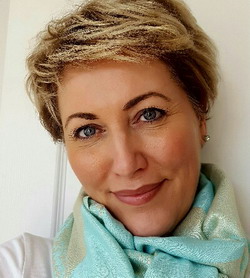
Rachelle O’Connor
Wine Writer & Competition Judge
It was a perfect Spring afternoon for a wine tasting last Thursday in the Copper Bar of the chic Andaz Hotel in downtown Ottawa. An excited group of wine writers, myself included, awaited the arrival of Frédéric Bonnaffous, Head Winemaker for the Bordeaux Estate of Dourthe.
Dourthe is built on a solid foundation with an unwavering commitment to quality. The history is as rich as the soil that the vines are planted on.
The portfolio is diverse, with many layers revealing the proven success and immense skill of the collaborative efforts from the team. Dourthe manages more than 500 hectares of wines in Bordeaux – and they continually are seeking means to improve their already impeccable attention to vine health, longevity and yield.
They also conduct cutting edge research and insist on extreme vineyard care year-round to support their specifications and innovative trials.
The history of the Dourthe family spans almost two centuries, starting with the opening by Pierre Dourthe, of a wine merchant business in Bordeaux around 1940.
From there, the family business evolved over time into one of the most recognized names in the world, representing many outstanding Bordeaux wines. The acquisition of so many estates over time has strengthened Dourthe and solidified their legacy globally.
As our tour through many of the Estates continued, Frédéric spoke with great passion and knowledge. As the wines were able to sit and breathe a bit, the aromas from the glass began to really open up.
Frédéric knew exactly what challenges they faced year over year, and also knew where they achieved great success across the vast number of vineyards. “The soils are different, the yields can vary, the weather is different, therefore the final product is different”, noted Frédéric.
So many of the wines we tried were truly fabulous, the Chateau de Ricard and the Chateau Haut Gros Caillou were fresh and flavourful; however, my two favorites of the tasting were the Diane de Belgrave, 2011 and the Essence de Dourthe, 2010. They both had that ‘wow” factor for me.
Diane de Belgrave, is a classic Bordeaux from Chateau Belgrave in Haut –Medoc (60% Merlot, 32% Cabernet Sauvignon, 5% Cabernet Franc, 3% Petit Verdot). The wine was elegant, silky, smooth and sophisticated.
The fruit really shone through after it was able to breathe a bit in the glass. Decanting is a must to really see all the beautiful layers of this wine.
The Essence de Dourthe 2010, perfection in a bottle. It is a non-traditional, high-end Bordeaux blend, with grapes from different appellations – Cabernet Sauvignon and Merlot from fifth growth Chateau Belgrave in Haut Medoc, a dash of Petit Verdot from Chateau le Boscq in St. Estephe, extra Cabernet Sauvignon from Chateau La Garde in Pessac-Leognan and some Cabernet Franc from grand cru St. Emillion Chateau Grand Barrail Lamarzelle Figeac.
This wine is created only when the winemaker believes that the conditions have been present to create such a magical potion that will deliver that superb end product – there have been many years without a vintage – 2004, 2007, 2011, 2012, 2013.
Chateau Reysson 2014
Bordeaux, France
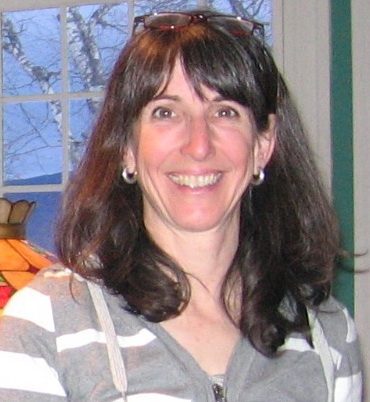
Pam Chiles
Wine & Food Writer
I have to admit – Bordeaux can be intimidating. So many appellations, the 1855 classification, the Left Bank, the Right Bank, the first growths, the second, third, fourth, fifth growths, the powerhouse chateaux (bottles and buildings) that billionaires collect.
I drank Bordeaux eons ago, before I knew anything at all about wine, I think because it was the thing to do.
Then I discovered lots other wines regions – Italy, Spain, Chile, Australia and drifted away from claret, as the Brits love to call it.
In about the last couple decades, I can recall drinking Bordeaux twice: once in wine class and once at a Commanderie de Bordeaux evening (a fancy wine club to which you must be invited) – we had a Chateau Cheval Blanc (1993) and a Chateau Pichon-Longueville Lalande (1982) – they were lost on me, sadly, I just didn’t “get” them.
Fast forward to the present – I have a better understanding and appreciation of wine generally, having studied and drank a bit more (!). But I also wanted to understand and appreciate what we were going to discover at the Dourthe tasting, so I hauled out the bible: Hugh and Jancis (World Atlas of Wine) and got re-acquainted.
I just scratched the surface and found I had a profound urge to spend an hour on Travelocity. The ideal way to discover wine is to travel to the source, but alas, time and money factored in, as they usually do!
No need to hop on a plane, led by winemaker Frédéric Bonnaffous, we wound our way through Bordeaux, chateau by chateau, discovering the geography, history, viticulture, winemaking, vintages of many of Dourthe’s properties. The wines we tasted linked back to the region, expressions of the terroir and the production.
We sampled everything from an everyday Bordeaux Superieur (Pey la Tour) to their flagship creation – Essence (a rare and expensive beast). Wines for all tastes and budgets.
For me, some of the higher-mid-range wines ($30 to $70) were stars – Grand Barrail, Belgrave, La Garde (there is a note on my calendar to look out for the 2010 release). Located in the vicinity of many first-growths, but not necessarily next-door-neighbours, they showcased a fabulous range of aromas and flavours, depth, complexity and concentration, each bottle distinct from the other.
All in all, a superb collection of wine.
The takeaway – one need not be intimidated or aspire to Cheval Blanc or Pichon or any other billionaire-bottle to enjoy a really good Bordeaux. Just dive in.
Essence De Dourthe 2010
Bordeaux, France
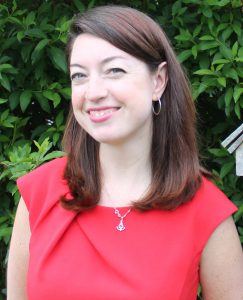
Melanie Aubert
Accredited Sommelier & Writer
On a beautiful, spring, sunny day, I headed to the Andaz Hotel in Ottawa’s Byward Market for an exciting afternoon of wine tasting with Dourthe, a long-standing Bordeaux winery which prides itself on excellence and quality achieved by respecting the land. Established in 1840, the winery owns nine gorgeous châteaux in the Bordeaux region, each representing a distinct sense of place, i.e. terroir.
Our guide for the tasting was Dourthe Head Winemaker, Frédéric Bonnaffous, who oversees winemaking at all nine estates. I believe this means he spends his life in his car driving back and forth between all the wineries. I blame my husband for finding myself wondering what kind of car he drives.
Of the 12 wines we tasted, and I may be the only one, but my favourite wine of the day was actually a white wine: the Château La Garde white, a blend of mainly sauvignon blanc, with a bit of sauvignon gris (a pink-coloured clonal mutation of sauvignon blanc) and semillon. The nose is quite complex, showing pineapple, peach, fresh melon and a hint of vanilla and caramel (11% of this wine is aged on new oak).
The sauvignon blanc is grown in limestone soil, lending this medium-bodied wine an attractive mineral quality, as well as mouth-watering acidity that makes it a very food-friendly wine. It even went with the delicious beef served by the Andaz, but it would work with a wide variety of dishes, from lighter fish dishes to honey ham or pulled pork tacos.
The other wine that stood out for me because it wasn’t like the others was the Château Rahoul. Many of the wines we tasted were quite heavy on the tannins, the kind of wines that instantly dry out the sides of your mouth. But the Château Rahoul was a bit different.
Hailing from the Graves appellation, known for its gravel soils, this wine is 60% merlot and 40% cabernet sauvignon. The tannins in this wine are much more subdued than in the other wines we tried. On the palate, you get lovely black cherry, smoke, fig, blackberry, cedar, and a hint of spice, backed by very juicy acidity and light tannins.
It is very exciting to note that many of the Dourthe wines are already at the SAQ, with certain coming later this year to the LCBO in various Vintages releases.
The main thing I learned about globally venerated Bordeaux wines at this tasting, was that these are typically not the types of wine that you would just sip on throughout an evening. These wines beg for food, and are in fact quite versatile when it comes to food pairing.
All of these wines would be a great match for beef stew, grilled meats, paté and charcuterie boards (as you may have surmised, the French aren’t so into vegetarian food).
This was a great and informative tasting. Thank you to Frédéric Bonnaffous for coming all the way from France; to the Andaz for providing such a great venue; to Dandurand Wines; and of course Natalie, for organizing it!
Chateau Le Boscq 2012
St Estèphe, Bordeaux AOC, France
Château La Garde Blanc 2014
Pessac-Leognan, Bordeaux DOC, France
Jane Staples
Wine Columnist, Ottawa Wedding Magazine
Wine writers go to a lot of wine tastings. While they are inevitably very enjoyable and sometimes exciting, many are soon forgotten.
Then, occasionally you attend one that makes you really sit up and say “wow”, this wine is a masterpiece! Sometimes you feel that you have temporarily visited a particular region and become acquainted with their terroir.
Our winetasting lunch with Fédéric Bonnaffous, Head Winemaker for France’s Bordeaux estates of Dourthe, was this type of memorable occasion.
Our wine writing team happily gathered atop Ottawa’s Andaz Hotel in their Copper Lounge and enjoyed the skyline views on a spring day. Bonnaffous had laryngitis, but that didn’t stop his enthusiastic presentation of 16 wonderful wine products, complemented by a delicious lunch.
The history of Dourthe Estates began in 1840, when Pierre Dourthe, a hotelier in a village near Bordeaux, opened a wine merchant business in Bordeaux. His vision was carried through by his descendants, who brought fame and fortune to the Dourthe name, now associated world-wide with prestigious “haute-couture” Bordeaux wines.
I was surprised to learn the value of how a tiny quantity of Petit Verdot can add considerably more structure to a red wine. Many of the reds we taste had a small percentage of Petit Verdot, even as low as 1% or 2%, but in each case, Bonnaffous stressed that it is an important component.
I can honestly say that every wine we tasted was impressive and thankfully many are reasonably priced for the average consumer.
The highlight of the tasting was the last wine, Essence De Dourthe… silky smooth, complex and elegant with a dreamy finish. We lingered over that one, savouring the subtle flavours and rating it over 95 points. We were in no hurry to leave, having traveled vicariously to Bordeaux. This is a wine that once tasted, is never forgotten.
My brain created a new olfactory receptor site with the aromas and flavours, labelled ”Essence”.
This was a wonderful and memorable wine tasting. My only disappointment is that more of these exceptional wines are not available in Ontario. I’ll definitely be scouring the shelves in Vintages during each visit, ready to pounce when a Dourthe wine next arrives!
Château Belgrave 2012
Haut-Médoc, Bordeaux A.C., France
Lori Kilmartin
Accredited Sommelier
I was really excited to be a part of the Bordeaux tasting team with Natalie and my peers at the gorgeous Andaz Hotel.
I have to confess, French wines are not something I drink a lot of personally, so I was really looking forward to expanding my knowledge, with the added benefit of getting to taste some fabulous wines.
The event was hosted by the agency Philippe Dandurand Wines and featured wine from the nine estates of Dourthe Bordeaux; Chateau Belgrave, Chateau le Boscq, Chateau La Garde, Chateau Rahoul, Chateau Grand Barrail Lamarzelle Figeac, Chateau Haut Gros Caillou, Chateau de Ricaud, Chateau Pey La Tour and Chateau Reysson.
What I really enjoyed the most was meeting Frédéric Bonnaffous, Head Winemaker, who made a rare trip away from the wineries to come share his passion for the wines crafted at these Estates.
You can read my reviews here on Natalie’s website so I won’t go into detail on each of the 12 wines tasted. I had a few favourites but they were all extremely well made and delicious. When I asked Frédéric if he had a favourite I had to chuckle at his response which was along the lines of “It’s like when you have children – you love them all”.
One of the things I found interesting was his discussion on the use of the Petite Verdot grape in the wines. Even if they weren’t listed in the blend, apparently there is always a small component to add a little extra tannin, colour and aroma – violet in particular.
Frédéric referred to its use “like salt and pepper” and said that it “gave power to the wine”.
I was also very interested in how the weather really affects the vintages, some years being better than others. The 2010 vintage was an exceptionally good year, which I was very happy to hear, having bought some 2010 Bordeaux through the Futures program several years ago after hearing it was flagged as a banner year.
According to Frédéric, 2016 is also going to produce wines that are cellar-worthy, so you can be assured – when the LCBO futures program comes out – I will be adding some Dourthe Bordeaux to my cellar!
Dourthe provided the background below.
175 years ago: the launch of Dourthe
Dourthe has remained true to the values underpinning its rich and unique history since its early beginnings: a special bond with the soils, the highest quality standards and an innovative approach.
1840 Dourthe was founded by Pierre Dourthe
1929 Dourthe relocated to the very heart of the Bordeaux vineyards to Château Maucaillou in the Medoc
1950 Dourthe made its first foray into export markets
30 years ago: The Dourthe N°1 project
Dourthe N°1 was the first opportunity to really challenge Bordeaux conventions.
Objective: to produce a powerful wine in every sense, with a distinctive, complex aromatic character.
An innovative approach:
• Focusing on Sauvignon Blanc
• Engaging in a research programme working with Denis Dubourdieu
Involved from the early stages of the project:
Partner growers selected on the quality of their soils and a positive, motivated attitude.
• Providing viticultural support and guidance to partners
• Focusing on new winemaking practices
After Château Belgrave in 1979, in the 90s and until the present day, a further 8 properties have joined the portfolio, representing more than 500 hectares across different Bordeaux appellations.
− In-depth knowledge of the soils (research, restructuring and selective harvesting )
− Meticulous work in the vineyard in order to produce the finest quality grapes possible
− On-going research and trials to increase wine quality to produce:
Well-balanced wines that express the terroir
Quality benchmarks in every price segment
15 years ago: launch of the Essence de Dourthe project
Given this increasingly in-depth knowledge of our vineyards, we have been able to identify a number of exceptional plots. Our dream was to create a unique, different and original wine.
• Complete autonomy given to estate managers to achieve their optimum performance both in the vineyard and in the winery
• Seeking the ultimate blend of the available wines with the aim of achieving the perfect synergy of complementarity and harmony in the wines.
• An innovative project which in turn benefits all the different Dourthe estates
Essence is the masterpiece from Vignobles Dourthe, the ultimate Bordeaux wine on a par with the world’s finest wines.
This wine tasting was hosted by Dandurand Wine Agency.








